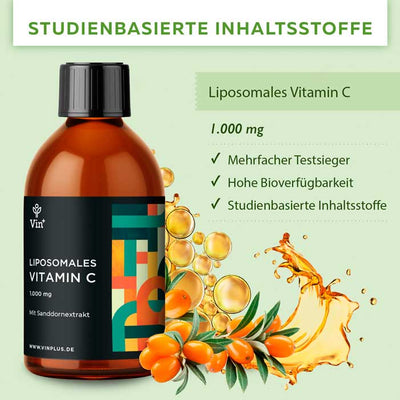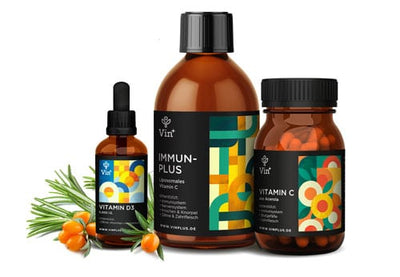
Atopy is an innate predisposition to developing hypersensitivity reactions of the mucosa and skin. Thus, atopic eczema is a chronic, inflammatory skin disease that is typically associated with severely dry skin and immense itching. Most patients develop the first skin changes as early as childhood. The clinical picture varies depending on the patient. In two thirds of those affected, there is a hereditary predisposition behind the atopic symptom and with 3-4% it is one of the most common childhood diseases. Boys and girls are equally affected. In exceptional cases, an illness during puberty or adulthood is also possible. 70% of those affected already fall ill in the first year of life. The causes of the disease are manifold. The most important point is the inherited predisposition from the parents. The predisposition is inherited and not the skin disease itself. Various factors, such as non-specific stimuli (disinfectants, soap, cleaning agents, cosmetics, detergents), allergies, infections (inflammation, flu and family and/or professional stress as well as physical exertion). the occurrence and also the severity. However, the role of allergies is assessed differently. The majority of patients who suffer from atopic eczema have allergies. Ultimately, the exact mechanism of the disease has not yet been clarified. The "multifactorial" influence is different for each of the patients.Climate fluctuations, excessive skin cleaning or keeping pets can also be triggers.
The appearance of atopic eczema

The so-called "cradle cap" is the first possible skin change in this disease. It usually occurs on the baby's hairy head and this already causes severe itching. In adults, eczema appears mostly in the crooks of the elbows and behind the knees, the large crooks of the joints, but also on the face, the shoulder area, the chest area and on the hands. The disease does not progress continuously, but occurs in phases. The symptoms are often more pronounced in the winter months. An inflammatory reaction is atopic eczema. In the acute stage, neurodermatitis is accompanied by swelling, reddening, weeping, blisters, and the formation of scales and crusts. If the disease persists for a longer period of time and becomes chronic, reddening, scaling and coarsening of the skin folds and thickening of the skin occur. Especially in children, the scratching attacks and the severe itching lead to great restlessness.
The position of the diagnosis
The dermatologist can already make a diagnosis by taking a close look at the affected areas. There are often other patients with eczema and allergies in the family. A blood sample can provide information about the inflammatory causes and the higher levels of IgE, ECP and EOsinophils that are typical of atopic eczema. Allergy tests are carried out to determine other triggers.
The treatment of atopic eczema

The predisposition to develop hypersensitivity reactions is the main cause of atopic eczema. This predisposition is innate and it lasts a lifetime. An absolute “cure” is therefore not possible. However, a significant improvement in the symptoms that exist and freedom from clinical manifestations can be achieved. The treatment of inflammations in the body, for example teeth, sideways nose, stomach and so on, often leads to an improvement in the symptoms. Furthermore, the severity of the skin diseases can also be favorably influenced by avoiding the triggers such as non-specific stimuli such as soap or allergens, stress, disinfectants and efficient therapy. In the case of acute flare-ups, priority is given to alleviating the itching and treating the inflammation for the patient.
Preventive measures for a known atopic genetic trait
Babies from atopic families should be breastfed for at least six months. This delays the onset of atopic eczema. The mothers themselves are advised not to smoke and to abstain from medication and alcohol while breastfeeding. No additional food should be given before the 4th to 5th month. After that, it is best to start with potatoes, bananas, carrots and then later vegetables and fruit. Breastfeeding should be stopped after the 6th month at the earliest. Only when the first year of life is completed are fish, eggs and citrus fruits given. Feeding infants and young children The best precautionary measure is milk-free, allergenic baby food to protect a child who is hereditary from developing neurodermatitis. Many doctors advise against cow's milk as a matter of principle and only give the baby low-allergen baby food. In recent years, protein-rich soy milk has often been used as a milk substitute, for example Lactopriv, Multival Plus Humana SL, Töpfer and so on. However, an unbalanced diet of soy can also lead to deficiency symptoms in small children and infants. Goiter formations have already been observed due to iodine deficiency, rickets, bone decalcification and also vitamin, iron and protein deficiency as well as an allergen against soya. In this case, monitoring is also important because of this and, if necessary, the administration of iron, vitamins and iodine.
General information about lifestyle

Skin dryness occurs more frequently depending on the season, for example in winter. Sweating is also reduced in neurodermatitis sufferers. The big joint bends are an exception. In the case of overheating, the patients cannot cool down through vigorous sweating and this heat build-up can lead to itching. There are patients who tolerate sweating from physical exertion but cannot tolerate sweating due to stress. In general, the sun and UV rays are well tolerated by neurodermatitis sufferers. Skin symptoms improve under sunlight and UV. However, UV sensitivity can occur in a small proportion of neurodermatitis sufferers. Patients who have neurodermatitis are also more prone to contact allergies, especially to ingredients in creams or ointments. Metal articles of daily use and jewelry and nickel should also be strictly avoided, even if there is no discernible intolerance to this.
Career choice
Choosing the right career is an absolute necessity for neurodermatitis sufferers. There is a risk of contact sensitization and thus an occupational disease. There is also a risk of developing allergic asthma from inhaling vapors or dust. Jobs that are not suitable are jobs with intensive contact with water, contact with oils, detergents, disinfectants, leather, adhesives, chemical products, drilling water, fats, but also flour, dust and animals. These should be avoided permanently. Professions in dry workplaces in clean air are recommended. Office work is the cheapest. To avoid are nurse, painter, photographer, hairdresser, cutter, and some more.
( Image source: Wikipedia Jaro.p; Inwe)








